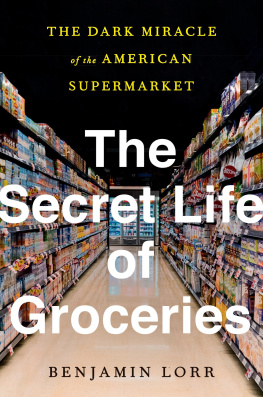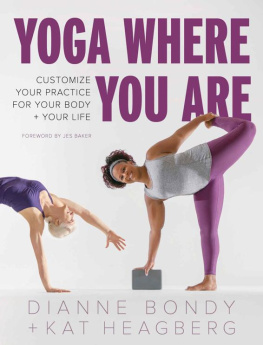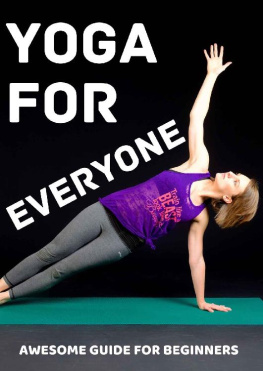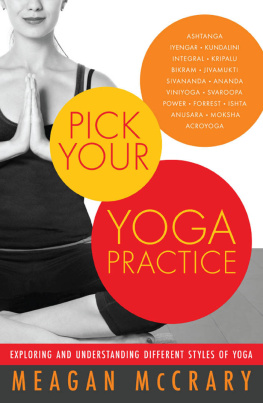
Copyright 2012 by Benjamin Lorr
This electronic edition published in 2012 by Bloomsbury Publishing Plc
First published in Great Britain 2012
Bloomsbury Publishing Plc
50 Bedford Square,
London, WC1B 3DP
Bloomsbury Publishing, London, New Delhi, New York and Sydney
The moral right of the author has been asserted
All rights reserved
You may not copy, distribute, transmit, reproduce or otherwise make available this publication (or any part of it) in any form, or by any means (including without limitation electronic, digital, optical, mechanical, photocopying, printing, recording or otherwise), without the prior written permission of the publisher. Any person who does any unauthorised act in relation to this publication may be liable to criminal prosecution and civil claims for damages
A CIP catalogue record for this book is available from the British Library
eISBN 978 1 4088 3640 8 (e-book)
Visit www.bloomsbury.com to find out more about our authors and their books
You will find extracts, author interviews, author events and you can Sign up for newsletters to be the first to hear about our latest releases and special offers
Contents
A folk song is whats wrong and how to fix it or it could be
whose hungry and where their mouth is or
whose out of work and where the job is or
whose broke and where the money is or
whose carrying a gun and where the peace is.
WOODY GUTHRIE
In many ways, this is the story of a crack-up. It is the year I came to believe that Michael Jackson was a fully realized saint and that fully realized saints walk among us all the time. It is the year I learned that even the most beautiful saint is capable ofmaybe even driven towardthe greatest destruction. A year I learned to feel compassion for that arc, not betrayal. It is a crack-up because I felt the narratives that bound my life togetheratheist, drunk, methodical saver for a methodical retirementunbuckle and drift off while, at the same time, I became more certain of the value of each than ever before. It was the year I convinced myself that I could take my spinal cord and bend it so severely that I could touch my forehead to my ass. A year I maintained three jobs while practicing upwards of fourteen hours of yoga a week. Where I started spontaneously wishing for Love (as an abstract concept) when blowing out birthday candles, flicking eyelashes, or performing other obsessivecompulsive cultural rituals of wishing. It is the year I started dating my very close friends ex-girlfriend and, not surprisingly, hurt my very close friends feelings very badly. A year when I decided to spend one thousand dollars on a stainless steel juicer for the sole purpose of putting liquid spinach into my diet more regularly. When I met countless well-intentioned, brave liars and got more honest advice from their lies than I could ever hope to repay.
Everyone interviewed in this book knew I was writing a book. try to capture my experience. Those who frequent the mystical section of bookstores are familiar with a concept called karma yoga. It is the yoga of the Bhagavad Gita, the yoga of action. To practice your karma yoga is to practice what you were put on this planet to do. There is no doubt in my mind that Bikram Choudhurys karma yoga is teaching yoga. He has such joy when spreading it. My karma yoga is the practice of writing; just like Bikram, Im pretty sure Im going to end up hurting people while I practice.
were to burst into the sky
that would be like
the splendor of the Mighty One.
J. ROBERT OPPENHEIMER, QUOTING THE BHAGAVAD GITA
AT THE SUCCESSFUL EXPLOSION OF
THE FIRST ATOMIC BOMB
megatons each. Nobody fucks with me.
BIKRAM CHOUDHURY
I am standing at the stage door, peering out through blinding light at blackness. It feels like a high-definition dream. Everyone is here. Assembled in the Grand Ballroom at the Westin Los Angeles in stillness: familiar faces staring straight ahead, this weird collection of antagonism and love, all connected by invisible understandings. The only word that even remotely fits is family. I am shirtless in spandex, staring at them. Above me, a row of klieg lights drops off the ceiling, aimed like compact cannons at the stage. The light shooting from their housing animates the dust in its path; its the old visual clich of movie projectors and morning attics, but watching the dust shimmer, I cant help but feel it is stripping open the very fabric of the universe.
At least for this moment, in this room.
In the center, on a stage lit white as a sun, a man holds himself in a perfect handstand. The muscles in his forearm ripple in micromovements. Behind him there are two billboard-sized screens capturing live projections of his every action. I watch the handstand in triplicate. Slowly, the man raises his chest up and drops his feet forward, arching his back until his heels rest on the top of his head. At that moment, there is a circuit that has been completed: an O that travels from the back of his head up his legs and then around back down his spine to his head again. The thousand-plus people in the audience watch this circuit in absolute stillness. The man holds the O of his body aloft on two arms. He smiles. Then the micro-movements in his arms stop. His breathing disappears. There is a moment that stretches just long enough for my internal instincts to doubt its plausibility, for the hairs on my arm to stand on end, for my senses to consider the unconscious question of whether it is the man who is frozen or the universe around him that has stopped. Then there is a whirr from the burst shutter on a high-res camera, a twitch in the mans forearms, and suddenly were back. The man returns from the posture the same way he went in. He stands up and bows; the room explodes in applause.
The MC announces a time of two minutes and forty-nine seconds. The audience begins to move. The announcement is repeated for a video camera live-broadcasting the event to the world. My eyes adjust to the glare.
In the front row, Bikram Choudhury, multimillionaire founder of Bikram Yoga, is snapping his fingers calling for a Coke. He is making noises like he is coaxing a monkey with food, Tht-tht-tht-tht Hey, Balwan, come on, come on, Balwan, come! When no one scurries up to him, he snorts and looks over his shoulder. He leans into the slender woman sitting next to him, as if to caucus with her about his dilemma, but says nothing. Finally he stands, cutting into the spotlights and turns around, asking the entire room to go find Esak for him.
There is a woman crouching, whose face I know well but whose name I cant remember, who resumes massaging Bikrams thigh when he sits back down.
There is his wife, Rajashree, exactly eight seats away from him. There is Hector, and there is Afton.
There is eighty-three-year-old Emmy Cleaves walking back to her front-row seat in a positively slinky dress. She sits, hair pinned back, shoulders in perfect posture, the grand dame of the entire event. There is Sarah Baughn and her daughter crouched in the back playing patty-cake. There is even Courtney Mace somewhere, invisible, just like she wants to be.
This is the National Yoga Asana Championship, semifinal round. In a moment, I will go onstage to perform a three-minute routine I have spent the last three years learning. My goal is to approximate that man in his handstand. His control, his poise: I want to demonstrate my focus to the room. I want to make at least one hair on one arm stand on end. I will be judged just like an Olympic gymnast, according to the physical nature of the posturesor asanasI perform. Points will be awarded based on the difficulty of the pose in question and the depth and skill with which I demonstrate it.
Next page








